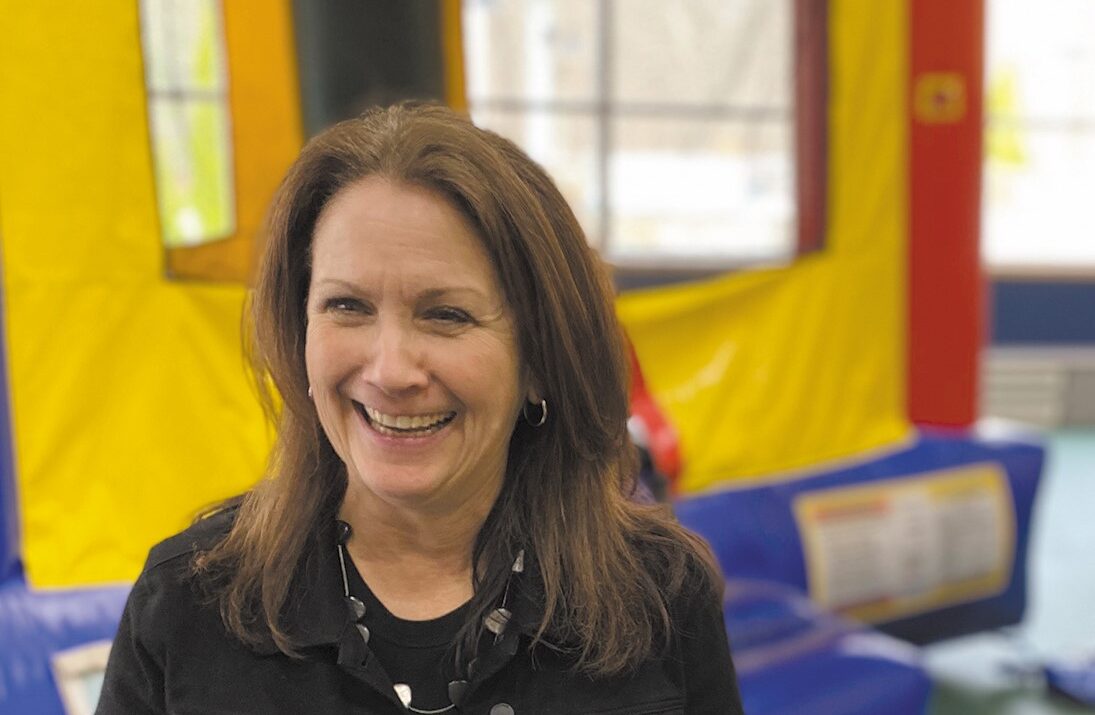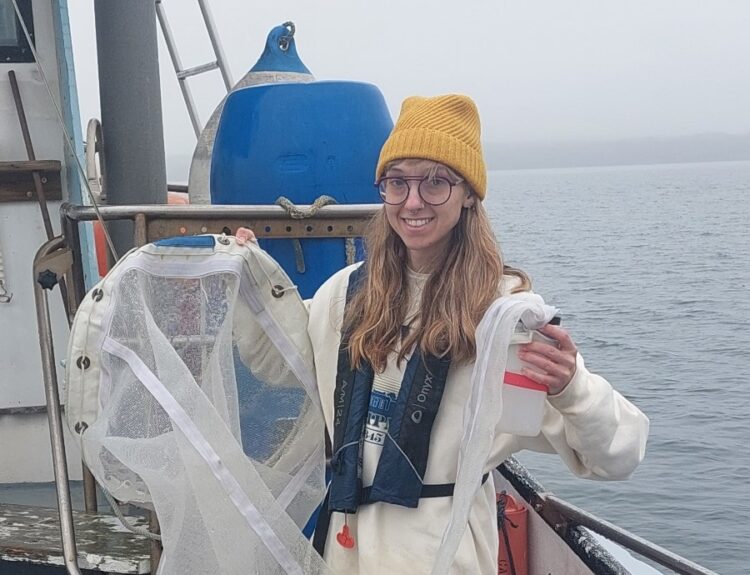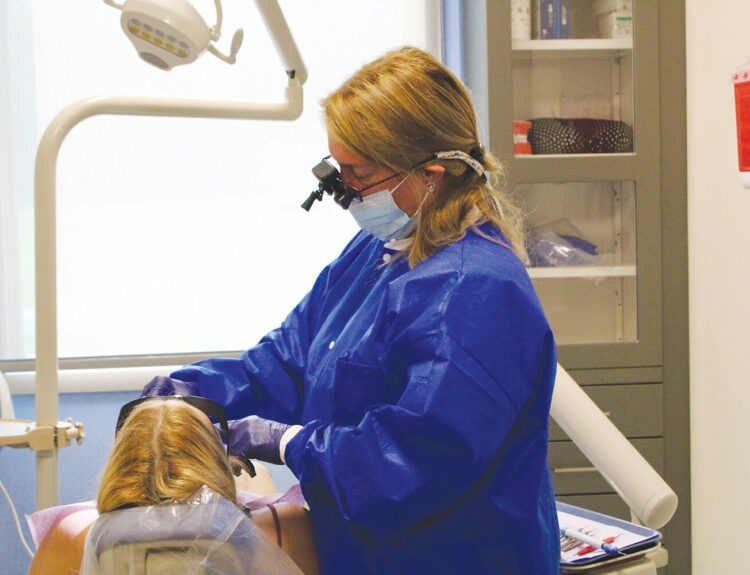‘She has a North Star as a leader where she knows where she wants to go and she knows the values that she needs to follow getting there’
This story originally was published in the Warwick Beacon, a publication partner of Ocean State Stories.
WARWICK — There’s a room just off the lobby of the Kent County YMCA equipped with plenty of exercise balls and stationary bikes, and even a mirrored wall, complete with a ballet barre.
Each hints at what this space is typically used for – exercise classes, a dance studio, maybe.
On a recent Wednesday afternoon, though, it’s an office of sorts for Karen Santilli.
Is this the typical working environment for the CEO of the Greater Providence YMCA?
After a hearty laugh, Santilli, who sat behind a folding-table-turned-desk in the center of the room, responded: “Some of the time, they’re in the kids care rooms.”
What about her office in Providence? Does she ever see it?
“Not so much, but that’s OK.”
Indeed, these days, Santilli is busy boomeranging around the GPYMCA’s six branches throughout the region, criss-crossing Rhode Island and working to quickly learn everything she can about the Y’s 31,251 members and more than 500 employees.
The seasoned 57-year-old nonprofit executive from Cranston, after all, just started on the job early last month, arriving at the YMCA after a 16-year run at Crossroads Rhode Island – the organization battling homelessness in the Ocean State – the last nine of which she served as CEO.
Having felt she made Crossroads resilient for the future, Santilli is now at the helm of one of the state’s most historic community institutions as it tries to shake off the lingering blows of the COVID pandemic – a drop in membership and a resulting loss of revenue – and figure out what exactly will make the Y a thriving local hub for the second half of the 2020’s and beyond.
“We’re not in a global pandemic anymore. We are in a different world,” Santilli said recently, in her first sit-down interview since starting the job on March 4.
“So let’s adjust – what are those adjustments that we need to make, so that we’re still serving our members, we’re still serving our community, and we’re achieving the mission of the Y to make … strong, resilient kids and communities? And so, that mission is what drives me.”

Working with vulnerable communities
As she sees it, this new chapter is, after all, somewhat of an extension of the work she has made a focal point of her career: Serving Rhode Islanders, however she can.
“When I learned more and more about the Y and what the Y does, it’s still working with vulnerable communities. We’re still working with children and families that need some help,” Santilli said.
“We’re also talking about health and wellness for our senior citizens, for our first responders, for the community at large,” she added. “The mission of the Y spoke to me.”
In turn, it was that approach to the job that spoke to Steven Della Posta, chair of the GPYMCA’s Board of Directors.
“Even when we interviewed her, you got the impression that it was important for her to follow the mission, to help in the communities where she could make a difference,” Della Posta recalled.
“A lot of that was more important to her than, what am I going to be doing day to day or what am I going to get paid or whatever,” he continued. “It was how she can make an impact in the community and how the nonprofit can be the best it can be and bring to the community what’s missing.”
At the YMCA, what’s missing these days is some of the organization’s pre-pandemic membership, according to both Santilli and Della Posta.
The COVID shutdowns in 2020 certainly applied to YMCA facilities, and the lack of programming left memberships spiraling.
“In some respects, we haven’t completely come back from that, and some of the members that have been longtime members see the difference,” Santilli acknowledged. (She also credits her predecessor, Steve O’Donnell, for “keeping this organization alive and open and running during the pandemic.”)
Revenue also took a hit. Financial statements available through an online database maintained by ProPublica, the investigative journalism nonprofit, show the GPYMCA boasted nearly $28.8 million in revenue in the 2019 fiscal year, then plummeted to $16.2 million in 2020.
A slight rebound to $20.6 million was reported for 2022 – the most recent year records are publicly available for – though that’s still a far cry from the pre-COVID cash flow.
So how will Santilli approach it?
“It’s kind of like driving down the highway fixing the flat tire at the same time,” she said.
It’s a road she has – kind of – been down before.
Under her tenure, Crossroads weathered the COVID-19 pandemic, crafted a three-year strategic plan, and most recently saw through a $15 million capital campaign to cover the cost of new housing units, now under construction.
“I think she is the finest nonprofit leader I have ever dealt with throughout the country, and I’ve dealt with many,” said U.S. District Chief Judge Jack McConnell, a longtime board member at Crossroads. “I can say that without hesitation.”
Santilli “thinks strategically about decisions that are made today that affect tomorrow,” McConnell said.
She knows where she wants to go
“She has a North Star as a leader where she knows where she wants to go and she knows the values that she needs to follow getting there,” he added. “And she follows that script to a tee.”
Crossroads also slogged through its share of financial difficulties over the past decade.
When Santilli started as CEO, the nonprofit reported a $623,000 deficit in fiscal year 2015. Employees were paid using Crossroads’ line of credit.
“The reports during pre-[Santilli] times began … with how far into the line of credit are we?” McConnell recalled.
By 2022, Crossroads saw a net income of nearly $6 million, with total revenue of $26.5 million – up from a total of $9 million in seven years, financial statements show.
“We made some really difficult decisions, but we also knew we had to grow ourselves out of the problem,” Santilli said.
“And I see some similarities here [at the YMCA],” she added. “We’re going to have to make some difficult decisions, but we’re going to grow ourselves out of the current situation that we’re in. And it’s possible.”
Santilli declined to say what some of those decisions ahead may entail, but made clear members will not see a raise in rates this year.
Some changes have already started to roll out, such as how credit card processing fees are now passed onto members – a tweak that’s anticipated to save the YMCA “north of $250,000” annually, according to Santilli.
The GPYMCA has also settled at least two lawsuits since 2020, one filed by two former employees over alleged gender discrimination and another filed by the parent of a child with cystic fibrosis over alleged disability discrimination.
The latter alleged the YMCA did not modify its medication administration policy so the child could attend the Camp Fuller summer program in 2022, federal prosecutors said earlier this year.
Some good from legal woes
The case was settled in January, with an agreement requiring the YMCA to train its staff on the Americans with Disabilities Act, review future camp requests on a case-by-case basis, and to provide a $10,000 payment to the family, among other stipulations.
While the legal woes arrived before Santilli’s tenure began, she acknowledged “sometimes good comes from things like that.”
“We’re going through some training now that maybe should have been in place or really being more thoughtful about accommodations for, you know, campers’ medication,” she said. “So maybe that’s a good thing. I don’t know. I try to see the positive in it.”
As for membership growth, both Santilli and Della Posta believe there’s a persistent disconnect out there about what exactly the Y does and what it can offer.
There are daycare and afterschool programs, educational offerings, and a lot more beyond what’s provided at a typical gym, said Della Posta.
“We don’t want to be considered a gym,” he said. “We’re trying to do much more of a better job of letting people know what we do offer.”
Santilli put it this way: “I just think we haven’t really done a great job of telling our story.”
She went on to boast about decorated swimmers and dancers in the Y’s programs; about the science, technology, engineering and math program at the East Side/Mt. Hope branch in Providence; and new offerings for pickleball, the tennis-like sport that has gained traction around the country in recent years.
A mother of three, Santilli also knows personally what the YMCA can bring its members: Her children, now grown, learned to swim at the Cranston branch, and she and her husband often frequented the gym there, when the family lived close by.
“There’s just a lot of really cool things that are happening that we just need to get better at letting people know,” Santilli said.
Around here, in Cranston, the YMCA held a soft re-opening earlier this month for renovations that revamped the childcare center and teen hang-out space on the ground floor, allowing for a “brighter, more welcoming feeling when you come in,” Santilli said.
Additional improvements are in the works, she added.
As for what could be in store for the Kent County branch, Santilli pointed to the property’s large acreage – maybe there’s a way to use more of that land, she wondered aloud.
What about across the GPYMCA? Where does she want to see the organization in five years?
“I want to see us having branches and properties that are well maintained, with growing memberships and programs and offerings that the members want,” Santilli said.
“I see us expanding and having more of a presence in Providence, particularly in the inner city and serving kids at-risk and people who are looking for a sense of community. I see a financially-resilient organization.”
Yes, after four years of pandemic slog, the YMCA is looking forward to what the future holds.
Santilli has “come in and she sees a lot of challenges, but she also sees a lot of opportunity,” Dellaposta said.
“It’s almost what do you do first? Because she sees so much of it, which is exciting.”
As Santilli sat behind the folding table in her makeshift office at the Kent County Y last week, a similar question prompted her to pause: What does she want to do with the YMCA?
After a few seconds, she replied, “These are hard questions to answer because it’s not about me. It’s about the organization.
“I see myself as a transformational leader and I tend to like to go in and see how we can make things better,” she continued. “Because if at the end of the day, we’re not working towards our mission, then why are we here?”






